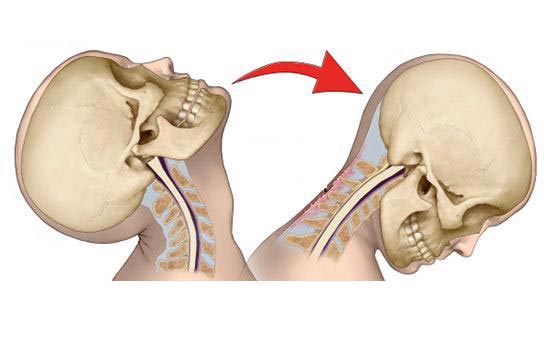Every 16 seconds, someone in the United States suffers a whiplash injury. Whiplash is a term that describes a specific type of injury to the neck resulting from an intense, rapid force, typically from an automobile collision. Damage to the muscles, joints and connective tissues in the neck occur when the head is suddenly jerked back and forth beyond its normal limits.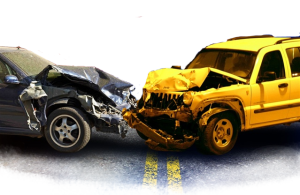
In a rear end collision, for example, the victim’s car is first pushed or accelerated forward and then is rapidly decelerated, either due to striking another vehicle or because the car’s brakes were engaged. As the vehicle accelerates forward, it pushes the victim’s body forward too, but the head remains behind momentarily, straining the neck until some of the muscles and ligaments are stretched or torn. Frequently, a whiplash injury occurs before the head even strikes the headrest. During all of this, the discs in the spine can bulge, tear or rupture, and the individual vertebrae in the spine can be forced out of their normal position. The spinal cord and nerve roots can also become stretched, irritated or pinched, resulting in nerve damage.
Until recently, the severity of these “soft tissue” injuries was hard to measure and fully understand, due to a lack of imaging technology. But the advent of Magnetic Resonance Imaging (MRI), Computed Tomography (CT) and advanced x-ray techniques has allowed clinicians to measure with reasonable accuracy how much damage occurred in a whiplash injury. Surprisingly, it has been found that substantial injuries often occur even in even low-speed collisions.
One of the most perplexing aspects of whiplash injuries is that most people are unaware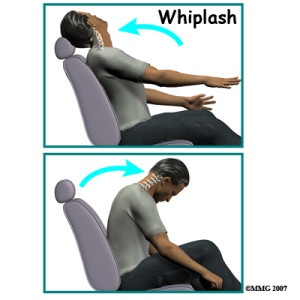 that they have been injured immediately after an accident. They may experience a slight discomfort and stiffness in their neck or back, but it may take a couple of days or weeks after the accident before they realize that something is wrong. In some cases, it may even take months for symptoms to develop. Because of this, people often don‘t make the connection between current pain and a previous car accident. But several recent studies have shown that this delay in symptom onset is the norm, rather than the exception.
that they have been injured immediately after an accident. They may experience a slight discomfort and stiffness in their neck or back, but it may take a couple of days or weeks after the accident before they realize that something is wrong. In some cases, it may even take months for symptoms to develop. Because of this, people often don‘t make the connection between current pain and a previous car accident. But several recent studies have shown that this delay in symptom onset is the norm, rather than the exception.
A common misperception about whiplash injury is that if a vehicle does not sustain damage, or if the damage to the vehicle was minimal, then the occupants could not have sustained a whiplash injury. Numerous studies have shown, however, that this is just not the case. Low-speed collisions can produce whiplash injuries as severe, and in some cases more severe, than high-speed collisions. In fact, in a series of recent human volunteer crash tests of low-speed rear impact collisions in San Diego, it was reported that the threshold for soft tissue injury was five miles per hour! How could this be?
The answer has to do with where the force ends up going. In low-speed collisions, the amount of force sustained by the vehicle is not enough to cause crushing of the vehicle itself, resulting in most of the force being transferred to the occupant. In higher-speed collisions, the metal of the vehicle crushes and deforms, which dissipates much of the energy of the collision. If you have ever tried to push a car, you know how much energy it takes just to get it moving at all. Now imagine how much force a car has when it is moving at five or ten miles per hour. It’s easy to see that if all of that energy was transmitted through your body that it would certainly be enough to cause an injury.
Whiplash injuries can manifest in a number of ways. Nearly all of those who have suffered a whiplash injury will suffer from neck pain and headaches, and most will experience fatigue, anxiety, upper back pain and shoulder pain.
Whiplash injuries can be very sneaky and very debilitating. You may not think you have been injured, when in fact you have. And the more time that elapses between the time you are injured and the time you seek help, the more likely that your injuries will become permanent. Too often people wait to seek treatment until more serious complications develop. Almost half of the people who suffer a whiplash injury report that they still suffer with symptoms two years after their accident. In fact, a recent study of whiplash patients reported in the European Spine Journal found that between one and two years post injury, 22% of patients’ condition continued to deteriorate, and although estimates vary, about 10% of all whiplash victims eventually become disabled.
One important point often missed in automobile accidents is the effect on children. Children involved in automobile accidents are often overlooked and their medical condition neglected, so their injuries are frequently undetected. In actuality, they suffer from the same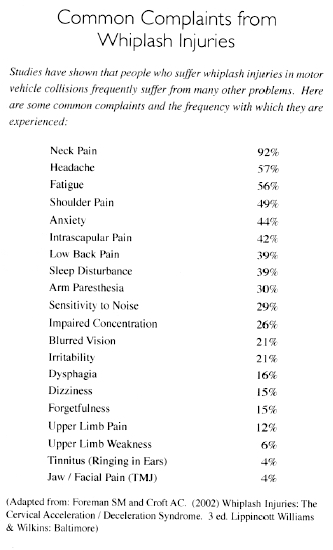 symptoms and can be at a greater risk for damages because their bodies are less developed. And because children often cannot communicate about how they feel as well as adults can, they are often thought to be uninjured simply because they lack the words to describe their pain.
symptoms and can be at a greater risk for damages because their bodies are less developed. And because children often cannot communicate about how they feel as well as adults can, they are often thought to be uninjured simply because they lack the words to describe their pain.
The purpose of this site is to help you understand what happens to your body during a motor vehicle collision – how it is injured – and how a combination of chiropractic care and muscular rehabilitation can help you recover from your injuries. In addition, you will learn some simple things that you can do at home to help your body heal from a whiplash injury.
In the next article (post) you will learn the basic body mechanics of your muscles, bones, joints and nerves. By understanding more about how your body should work, it is easier to see how injuries can affect the body as a whole. This will be followed by introducing the science of what actually happens to your body during a whiplash injury and how your body heals – or fails to heal – from it. The next three articles cover the three most important therapies to help you recover – chiropractic care, muscle rehabilitation and home care. We will also cover frequently asked questions, and additional whiplash resources. This is followed by a pain and disability questionnaire.
Although this site was created primarily for those who have been injured in an auto accident, it may 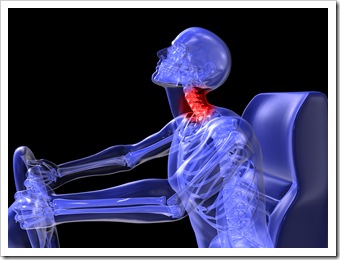 also be useful for professionals who work with them, such as attorneys, medical and physical therapy professionals, as well as insurance representatives. We encourage you to use this site as your complete whiplash resource to help you heal as rapidly and as completely as possible.
also be useful for professionals who work with them, such as attorneys, medical and physical therapy professionals, as well as insurance representatives. We encourage you to use this site as your complete whiplash resource to help you heal as rapidly and as completely as possible.
So let’s get started. . . please continue with the next post titled, “How Your Body Works.”

